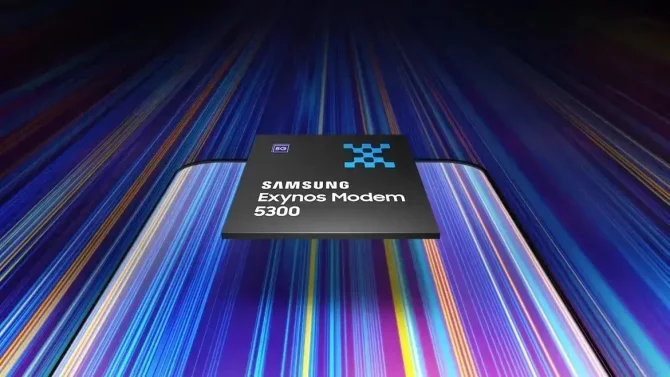
Samsung has finally released details about the Exynos 5300 modem it supplied to Google for the Pixel 7 and upcoming Pixel 8, months after their release. The Exynos 5300 modem was integrated into Google Tensor G2, which is based on Samsung’s Exynos chips, and was a significant improvement over the previous model. The modem is built on a 4nm process and is capable of delivering 5G download speeds of up to 10Gbps with upload speeds of up to 3.87Gbps. On LTE networks, it can handle download speeds of 3.0Gbps and upload speeds of up to 422Mbps.
The Exynos Modem 5300 supports 3GPP’s 5G NR Release 16 and provides support for FR1, FR2, and EN-DC technology. It provides ultra-low latency, and blazing-fast 5G speeds, and enables devices to deliver next-generation user experiences. Although Samsung did not offer any specifics on power efficiency, it noted that the “4nm EUV process… improves power efficiency” over the Exynos 5123 and extends battery life.
Exynos 5300 Modem Details:
The Exynos 5300 modem technically arrived first in the Google Pixel 7 series but will also be used in other smartphones going forward. Additionally, it is a part of Samsung’s Exynos 2300 chipset, which would have been in the Galaxy S23 series if Samsung had not struck a deal with Qualcomm for the “Snapdragon 8 Gen 2 for Galaxy” globally. The same Exynos 5300 modem will also be used on Google Tensor G3, as an early leak revealed back in November.
Google switched to Samsung for its chips, giving up on using Qualcomm‘s Snapdragon chips and their accompanying modems, which have been shown to provide the best connections to cellular networks. However, the Pixel 6 series suffered from weaker connections compared to devices with Qualcomm radios. With the Exynos 5300 modem, Google managed to address this issue and provide better connectivity to its users. Samsung claims that the modem is significantly faster, more reliable, and more power efficient compared to its predecessors, which is good news for users looking for better performance and longer battery life on their devices.





